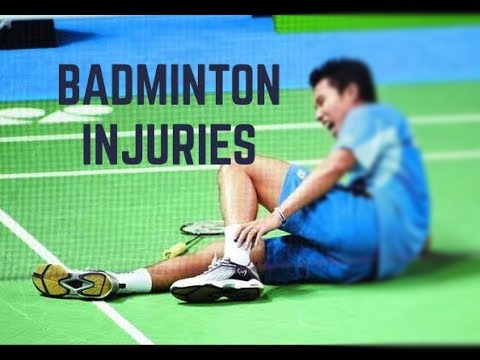What are the common injuries
Recent statistics reveal that badminton injuries occur at a rate of roughly 2.9 per 1000 playing hours. This means most committed badminton players will experience injury several times throughout their badminton career. As badminton is not a contact sport, most injuries tend to occur as a result of overuse. The speed and intensity of badminton means that there are a number of rapid and repetitive movements required by the player. Over time, these repeated actions place strain on the tissues and joints, potentially leading to injury.
Badminton players need to be able to move in all directions and change directions quickly, smoothly and efficiently. Sudden starts and stops wear out the body, and demand a lot of strength and motor skills for acceleration, deceleration and then immediate acceleration. The player needs to be in control of their ankles, knees, hips, back and shoulders, all at the same time. The structures of the shoulder are also vulnerable to overuse injury, particularly the tendons. Younger badminton players also struggle with injuries and pain in their knees, hips, shins and feet. Achilles tendon ruptures are also fairly common within this sport, especially among older players.
Common injuries
Patellofemoral pain syndrome
Jumper’s knee
Collateral ligament injuries
Medial tibial stress syndrome (shin splints)
Ankle sprain
Thrower’s shoulder
Plantar fasciitis
Achilles tendon rupture
Back pain
ANKLE SPRAINS
A sprained ankle is the single most common injury among badminton players. In fact, some research into the sport suggests that up to half of all badminton injuries involve sprained ankles. Badminton requires many rapid changes in direction, which can cause the player’s ankle to roll over. This tends to happen more if the player is tired. Wearing footwear that grips the court floor too firmly can also be a contributing factor. A sprained ankle occurs when the ankle ligaments and surrounding soft tissues are damaged, and it can be extremely painful for several weeks.
To avoid a sprained ankle, you should always choose footwear that allows you to slide enough over the court. You can also wear an ankle brace to help protect it and gain some extra support.
TENNIS ELBOW
Tennis elbow occurs as a result of gripping activities, such as the gripping of a racquet. The symptoms of tennis elbow include pain when the elbow is touched, or when the elbow is straightened while the hand moves back and forth at the wrist. Any kind of gripping in everyday life, such as opening jars or gripping a steering wheel, can cause severe pain to a tennis elbow sufferer.
You can help prevent tennis elbow by taking stops not to grip your badminton racquet too hard or for too long. You should also ensure that you always use the correct racquet size for your hand. If your racquet is too small, it could lead to you gripping harder than necessary. If you return to badminton after a lengthy break, be sure to take frequent rests and stretch the muscles around the wrist. If you have a tendency to suffer from tennis elbow, you might like to consider a compression strap or an elbow brace that stops the muscles fully contracting.
ROTATOR CUFF INJURY
This is common in badminton players because of the repeated stress on the shoulders during games. It is associated with overhead shots, in particular.
You can reduce your risk of rotator cuff injury by concentrating on the flexibility, endurance and strength of your shoulder muscles. You should aim to increase your training gradually in order to avoid overloading your muscles. If you suffer a rotator cuff injury, rest and immobilization using a shoulder brace will help with recovery.
In summary, the main thing to bear in mind when attempting to avoid injury is to never take on more than your body is ready for. While you might be eager to boost your training regime and build your stamina while improving your playing technique, it is always better to proceed slowly. A sudden injury can set back your training for months if you’re unlucky, and you’ll then be back to square one. While there will always be injuries as a result of accidents and falls, you can take a number of steps to reduce your chances of being struck with an injury resulting from overuse. If you’re new to badminton or returning to the sport after a long break, take plenty of rest stops when playing and ensure you warm up adequately. Stretching and using appropriate supports can also help you avoid injury.
